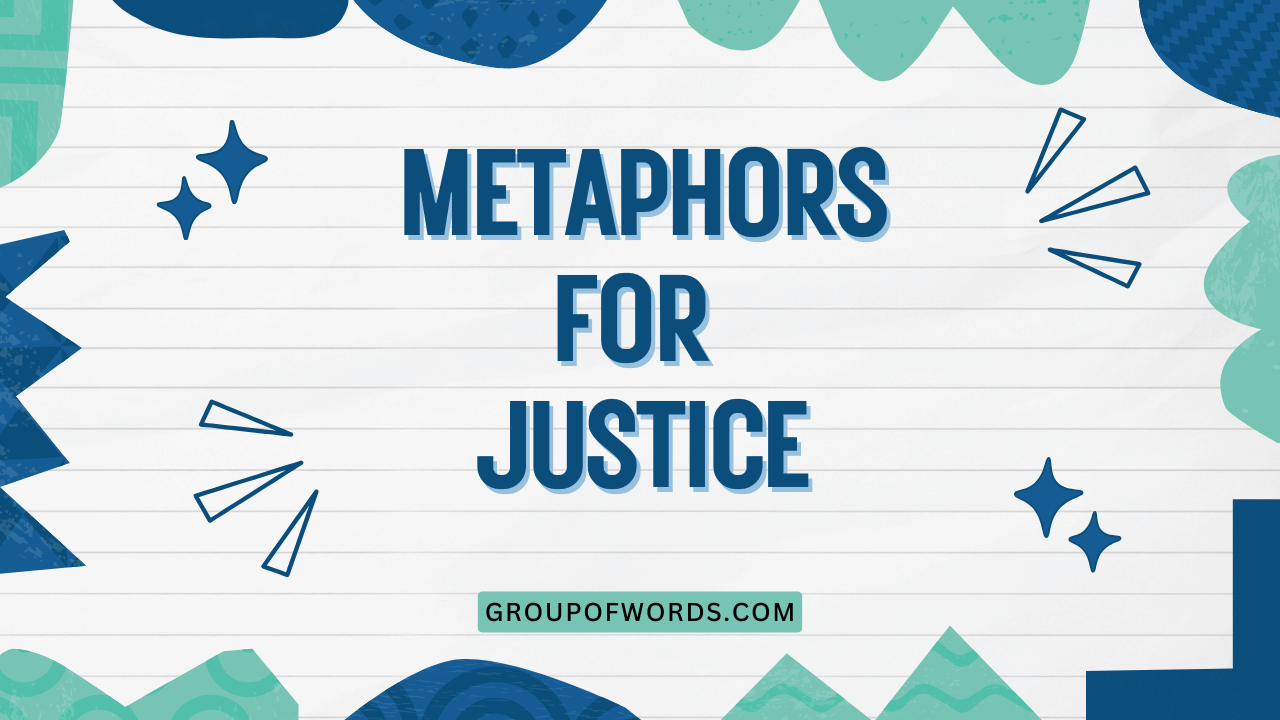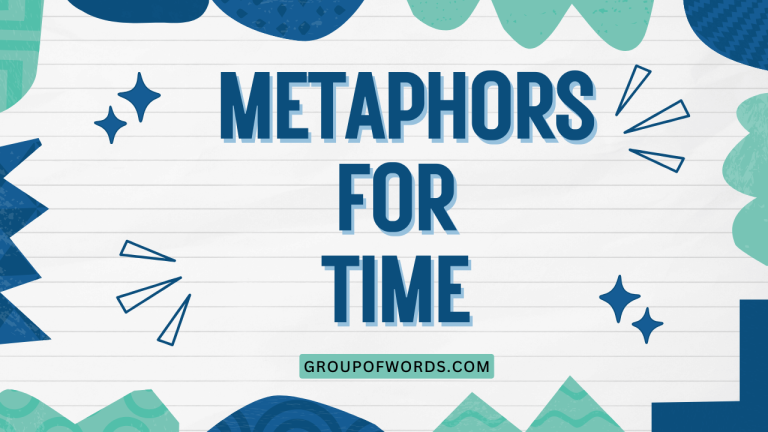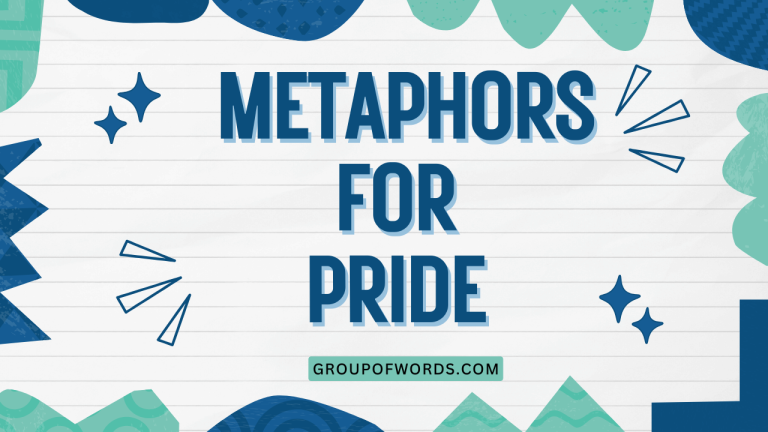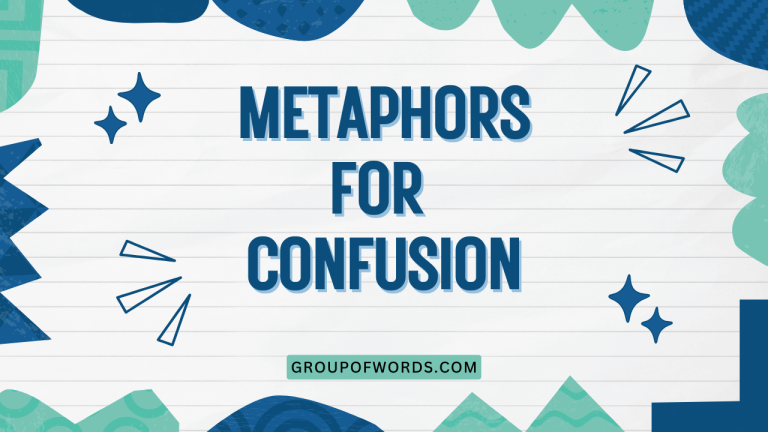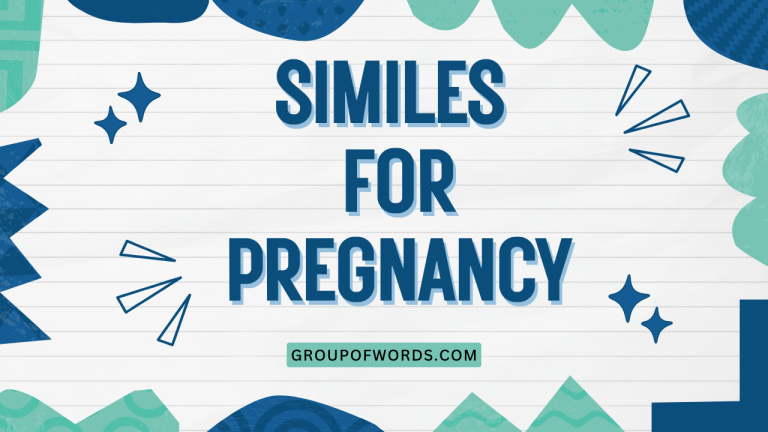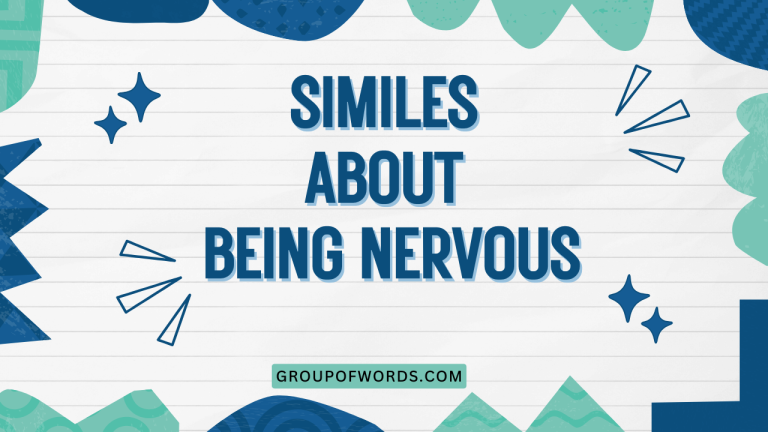Justice in Metaphor: Understanding Figurative Language
Metaphors are powerful tools that enrich our language and understanding of abstract concepts. Nowhere is this more evident than in discussions of justice.
By using metaphors, we can make complex ideas about fairness, law, and morality more accessible and relatable. Understanding the metaphors used to describe justice is crucial for anyone seeking to grasp the nuances of legal and ethical discourse.
This article will explore common metaphors for justice, their implications, and how they shape our perceptions of right and wrong. This guide is designed for English language learners, legal professionals, students, and anyone interested in the intersection of language and law.
This article aims to provide a comprehensive overview of justice metaphors, focusing on their linguistic structure, contextual usage, and the underlying concepts they represent. By examining various types of metaphors and their practical applications, readers will gain a deeper appreciation for the role of figurative language in shaping our understanding of justice.
Table of Contents
- Definition of Metaphors for Justice
- Structural Breakdown of Justice Metaphors
- Types and Categories of Justice Metaphors
- Examples of Justice Metaphors
- Usage Rules for Justice Metaphors
- Common Mistakes in Using Justice Metaphors
- Practice Exercises
- Advanced Topics in Justice Metaphors
- Frequently Asked Questions
- Conclusion
Definition of Metaphors for Justice
A metaphor is a figure of speech in which a word or phrase is applied to an object or action to which it is not literally applicable. It’s a comparison between two unlike things that share some common characteristics.
Metaphors for justice use this principle to describe abstract concepts of fairness, righteousness, and legal systems in terms of more concrete or relatable ideas. These metaphors can influence how we perceive and interpret legal and ethical issues, shaping our understanding of what constitutes a just outcome.
The function of justice metaphors is multifaceted. They serve to simplify complex concepts, evoke emotional responses, and provide a framework for understanding abstract principles.
By framing justice in terms of familiar concepts, such as balance, sight, or warfare, metaphors make it easier to grasp the underlying principles and implications of legal decisions and ethical considerations. The context in which these metaphors are used is crucial; legal arguments, political debates, and everyday conversations all employ metaphors to convey specific meanings and perspectives on justice.
For example, the metaphor of “justice as a blindfolded woman holding scales” conveys the idea of impartiality and balance. The blindfold symbolizes that justice should be administered without regard to the identity or status of the individuals involved, while the scales represent the weighing of evidence and arguments to reach a fair decision.
Understanding this metaphor allows us to appreciate the values and principles that underpin the concept of justice.
Structural Breakdown of Justice Metaphors
The structure of a justice metaphor typically involves two key elements: the tenor and the vehicle. The tenor is the subject being described (in this case, justice), while the vehicle is the object or concept used to describe it. The connection between the tenor and the vehicle is the shared characteristic or similarity that makes the metaphor meaningful.
Consider the metaphor “justice is a sword.” Here, the tenor is justice, and the vehicle is a sword. The shared characteristic is the power or force that both possess.
A sword is a symbol of strength and authority, and by comparing justice to a sword, we emphasize its ability to enforce laws and punish wrongdoing. This metaphor implies that justice can be sharp, decisive, and even painful when applied.
Another common pattern involves using action verbs to describe justice. For instance, “justice demands accountability” uses the verb “demands” to personify justice, giving it the agency to require specific actions.
This pattern highlights the active and assertive nature of justice, suggesting that it is not merely a passive concept but an active force that seeks to enforce ethical and legal standards.
Understanding these structural elements allows us to deconstruct and analyze justice metaphors more effectively. By identifying the tenor, the vehicle, and the shared characteristics, we can gain a deeper understanding of the intended meaning and the underlying assumptions that shape our perception of justice.
Types and Categories of Justice Metaphors
Justice metaphors can be categorized based on the concepts they draw upon to illustrate the nature of justice. Here are some common categories:
Justice as Balance
This category uses concepts of equilibrium and fairness to depict justice. Examples include “scales of justice,” “level playing field,” and “a balanced approach.”
Justice as Sight
These metaphors involve vision and clarity, suggesting that justice requires a clear and unbiased perspective. Examples include “blind justice,” “seeing justice done,” and “a clear view of the facts.”
Justice as a Journey
This category frames justice as a process or path that must be followed. Examples include “the road to justice,” “seeking justice,” and “a journey towards fairness.”
Justice as Warfare
These metaphors depict justice as a battle against wrongdoing. Examples include “fighting for justice,” “waging war on corruption,” and “the battle for equality.”
Justice as a Building
This category uses architectural concepts to describe justice, suggesting that it is a structure that must be built and maintained. Examples include “the foundation of justice,” “building a just society,” and “the pillars of the legal system.”
Justice as Healing
These metaphors focus on the restorative aspects of justice, emphasizing its ability to mend societal wounds. Examples include “restorative justice,” “healing the community,” and “mending the fabric of society.”
Each of these categories offers a unique perspective on justice, highlighting different aspects of its nature and function. By understanding these categories, we can better appreciate the diverse ways in which justice is conceptualized and communicated.
Examples of Justice Metaphors
Below are several tables showcasing examples of justice metaphors, categorized by type. Each table provides numerous examples to illustrate how these metaphors are used in various contexts.
Table 1: Justice as Balance
This table provides examples of justice metaphors that use the concept of balance to represent fairness and impartiality.
| Metaphor | Example Sentence | Explanation |
|---|---|---|
| Scales of Justice | The scales of justice must be balanced to ensure a fair trial. | Represents the weighing of evidence to reach a fair judgment. |
| Level Playing Field | We need to create a level playing field for all participants in the competition. | Suggests equal opportunities and fair conditions for everyone. |
| A Balanced Approach | The judge advocated for a balanced approach to sentencing. | Emphasizes the need to consider all sides and factors before making a decision. |
| Tipping the Scales | His testimony tipped the scales in favor of the defendant. | Indicates that one piece of evidence or argument had a decisive impact. |
| Maintaining Equilibrium | The legal system aims at maintaining equilibrium within society. | Highlights the role of justice in preserving social order and stability. |
| Restoring Balance | The verdict was intended to restore balance after the crime. | Suggests that justice seeks to correct an imbalance caused by wrongdoing. |
| Even the Score | The victim’s family sought to even the score. | Implies that justice is about retribution and achieving equality after harm. |
| Fair and Square | The election was conducted fair and square. | Indicates that the process was just and without bias. |
| On an Even Keel | The company managed to stay on an even keel despite the economic downturn. | Suggests stability and balance in the face of adversity. |
| Equitable Distribution | The court ordered an equitable distribution of assets in the divorce case. | Emphasizes fairness and impartiality in the division of resources. |
| Weighting the Evidence | The jury was tasked with weighting the evidence presented by both sides. | Highlights the importance of carefully considering all information before reaching a verdict. |
| Counterbalance | The defense attorney tried to counterbalance the prosecution’s arguments with expert testimony. | Indicates an attempt to offset or neutralize the opposing side’s claims. |
| Poised | The negotiation was poised for success, with both parties willing to compromise. | Suggests a state of readiness and balance, conducive to a fair outcome. |
| Compensate | The company was ordered to compensate the workers for their injuries. | Implies restoring balance by providing restitution for harm suffered. |
| Neutralize | The mediator sought to neutralize the animosity between the parties. | Highlights the effort to create a balanced and unbiased environment for resolution. |
| Equal Opportunity | The company is committed to providing equal opportunity for all employees. | Emphasizes fairness and access for everyone, regardless of background. |
| Just Desserts | The corrupt politician finally got his just desserts. | Suggests that someone received the punishment or reward they deserved. |
| Make Amends | He tried to make amends for his past mistakes by volunteering in the community. | Indicates an effort to restore balance and repair harm caused by one’s actions. |
| In the Balance | The fate of the company hung in the balance as the negotiations continued. | Suggests uncertainty and the potential for either a positive or negative outcome. |
| Give-and-take | Successful negotiations require give-and-take from both sides. | Emphasizes the importance of compromise and mutual concessions in achieving a fair agreement. |
| Fair Shake | Everyone deserves a fair shake in life. | Implies that everyone should have an equal opportunity to succeed. |
| Square Deal | The company promised its customers a square deal. | Indicates honesty and integrity in business transactions. |
| Evenhanded | The judge was known for his evenhanded approach to justice. | Emphasizes impartiality and fairness in legal proceedings. |
Table 2: Justice as Sight
This table provides examples of justice metaphors that use the concept of sight to represent clarity, understanding, and unbiased perspective.
| Metaphor | Example Sentence | Explanation |
|---|---|---|
| Blind Justice | Blind justice ensures that all are treated equally under the law. | Represents impartiality and the absence of bias in legal proceedings. |
| Seeing Justice Done | The community felt a sense of closure after seeing justice done. | Indicates that justice has been served and is evident to all. |
| A Clear View of the Facts | The investigation aimed to provide a clear view of the facts. | Emphasizes the importance of understanding the truth to achieve justice. |
| Bringing to Light | The journalist’s investigation brought to light the corruption within the government. | Suggests uncovering hidden information to reveal the truth and achieve justice. |
| Shedding Light On | The expert witness shed light on the complexities of the case. | Implies clarifying and illuminating unclear aspects to aid in understanding. |
| Looking Into | The authorities are looking into the allegations of fraud. | Indicates an investigation or examination to uncover the truth. |
| Eye for an Eye | The ancient code of eye for an eye is a principle of retributive justice. | Suggests a form of justice where punishment is equivalent to the crime. |
| A Fair Hearing | Everyone is entitled to a fair hearing in court. | Emphasizes the right to present one’s case and have it considered impartially. |
| In Plain Sight | The evidence was in plain sight, yet no one noticed it for years. | Indicates that the truth was obvious but overlooked. |
| Tunnel Vision | The prosecutor’s tunnel vision led him to overlook crucial evidence. | Suggests a narrow focus that prevents a comprehensive understanding of the situation. |
| Taking a Closer Look | The auditors decided to take a closer look at the company’s finances. | Implies a more detailed examination to uncover potential wrongdoing. |
| Seeing Through | The detective was able to see through the suspect’s lies. | Indicates an ability to discern the truth despite deception. |
| Obscured | The truth was obscured by conflicting accounts and misinformation. | Suggests that the facts were hidden or unclear due to various factors. |
| Overseeing | The judge is responsible for overseeing the trial and ensuring fairness. | Emphasizes the role of monitoring and supervising to maintain integrity. |
| Perspective | It’s important to consider the issue from different perspectives to understand the full picture. | Highlights the need to consider various viewpoints to achieve a balanced understanding. |
| Clear-cut | The evidence presented a clear-cut case of guilt. | Indicates that the facts are straightforward and leave no room for doubt. |
| Hindsight | With hindsight, it’s easy to see the mistakes that were made. | Suggests understanding the truth after the fact, often with regret. |
| Looking Ahead | The community is looking ahead to a future with more opportunities. | Implies anticipating and planning for a better future. |
| Foresee | The experts could not foresee the economic crisis. | Indicates an inability to anticipate future events. |
| Under Scrutiny | The company’s practices came under scrutiny after the scandal broke. | Suggests being subjected to close examination and investigation. |
| Oversight | The regulatory agency provides oversight to ensure compliance with the law. | Emphasizes the role of monitoring and supervising to prevent wrongdoing. |
| Glimpse | The investigation offered a glimpse into the corrupt dealings of the organization. | Indicates a brief or partial understanding of the situation. |
| In Sight | A resolution to the conflict is finally in sight. | Suggests that a solution is near and achievable. |
Table 3: Justice as a Journey
This table showcases examples of justice metaphors that use the concept of a journey to represent the process of seeking fairness and legal resolution.
| Metaphor | Example Sentence | Explanation |
|---|---|---|
| The Road to Justice | The road to justice can be long and arduous. | Represents the process of seeking fairness as a challenging path. |
| Seeking Justice | The victims are seeking justice for the wrongs they suffered. | Indicates an active pursuit of fairness and legal resolution. |
| A Journey Towards Fairness | The reforms represent a journey towards fairness for all citizens. | Emphasizes the ongoing process of improving justice systems. |
| On the Right Track | The investigation is on the right track to uncover the truth. | Suggests that the process is proceeding in the correct direction. |
| Lost its Way | The legal system has lost its way and needs reform. | Indicates that the process has deviated from its intended course. |
| Moving Forward | The negotiations are moving forward towards a resolution. | Suggests progress and advancement in the process. |
| Crossroads | The company stood at a crossroads, unsure of which path to take. | Indicates a critical decision point with significant consequences. |
| Turning Point | The trial was a turning point in the fight against corruption. | Suggests a significant moment that changes the course of events. |
| Come a Long Way | The country has come a long way in terms of human rights. | Indicates significant progress and improvement over time. |
| Navigating | The lawyer was skilled at navigating the complexities of the legal system. | Suggests skillfully maneuvering through a difficult process. |
| Obstacles | The investigation faced numerous obstacles in its pursuit of the truth. | Indicates challenges and impediments that hindered progress. |
| Paving the Way | The activists are paving the way for future generations. | Suggests creating opportunities and making progress for others. |
| Dead End | The investigation reached a dead end due to lack of evidence. | Indicates that the process has come to a standstill with no further progress. |
| Detour | The trial took a detour when new evidence was presented. | Suggests a deviation from the original plan or course. |
| Milestone | The verdict was a significant milestone in the fight for equality. | Indicates a significant achievement or progress point. |
| Stumbling Block | The lack of cooperation was a major stumbling block in the negotiations. | Suggests an obstacle that hinders progress. |
| Winding Road | The path to reconciliation was a winding road with many challenges. | Indicates a complex and unpredictable process. |
| On Course | The project is on course to be completed on time. | Suggests that the process is proceeding as planned. |
| Lost at Sea | The company felt lost at sea without clear direction. | Indicates a lack of guidance and uncertainty. |
| Charting a Course | The leaders are charting a course for the future of the organization. | Suggests planning and strategizing for future direction. |
| Getting Back on Track | The company is working to get back on track after the setback. | Indicates an effort to recover and return to the intended course. |
Usage Rules for Justice Metaphors
Using justice metaphors effectively requires understanding their connotations and implications. Here are some rules to consider:
- Context Matters: The appropriateness of a metaphor depends on the context. A metaphor that is suitable for a legal argument may not be appropriate for a casual conversation.
- Avoid Clichés: Overused metaphors can lose their impact. Try to find fresh and original ways to express your ideas.
- Be Consistent: Avoid mixing metaphors that create contradictory or confusing images. Maintain a consistent theme throughout your discussion.
- Consider Your Audience: Choose metaphors that resonate with your audience’s cultural background and understanding.
- Be Mindful of Tone: Metaphors can evoke strong emotions. Be aware of the tone you are conveying and ensure it aligns with your intended message.
For example, while “justice is a sword” can be effective in emphasizing the power of the legal system, it may not be appropriate in discussions about restorative justice, which focuses on healing and reconciliation. In such cases, a metaphor like “justice as healing” would be more suitable.
Common Mistakes in Using Justice Metaphors
Here are some common mistakes to avoid when using metaphors for justice:
| Incorrect | Correct | Explanation |
|---|---|---|
| “The scales of justice are running a marathon.” | “The scales of justice must be balanced.” | Mixing metaphors (scales with running) creates a confusing image. |
| “Justice is a building that sails the sea.” | “Justice is the foundation of a stable society.” | Inconsistent metaphors detract from the clarity of the message. |
| “We must fight for justice, which is also a gentle breeze.” | “We must fight for justice, which is a relentless battle.” | Contradictory images undermine the metaphor’s effectiveness. |
| “Justice is a road made of stardust.” | “Justice is a long and winding road.” | Avoid overly abstract or nonsensical metaphors that lack clear meaning. |
| “Seeing justice being done to the cat.” | “Seeing justice being done to the defendant.” | Ensure the metaphor applies to the correct subject, in this case, humans, not cats. |
Avoiding these mistakes will help you use justice metaphors more effectively, enhancing your communication and deepening your understanding of the concept.
Practice Exercises
Test your understanding of justice metaphors with these exercises.
Exercise 1: Identifying Metaphors
Identify the justice metaphor used in each sentence and explain its meaning.
| Question | Answer |
|---|---|
| 1. The scales of justice must be balanced to ensure a fair trial. | Metaphor: Scales of justice. Meaning: Justice requires impartiality and a fair weighing of evidence. |
| 2. The road to justice can be long and arduous. | Metaphor: Road to justice. Meaning: Seeking justice is a challenging and lengthy process. |
| 3. We must fight for justice against corruption. | Metaphor: Fight for justice. Meaning: Achieving justice requires active effort and resistance against wrongdoing. |
| 4. The investigation brought to light the hidden truths. | Metaphor: Brought to light. Meaning: The investigation revealed previously unknown information. |
| 5. The verdict was a milestone in the fight for equality. | Metaphor: Milestone. Meaning: The verdict represents a significant achievement in the pursuit of equality. |
| 6. The legal system is the foundation of a just society. | Metaphor: Foundation. Meaning: The legal system provides the essential support for a fair and equitable society. |
| 7. Restorative justice aims to heal the wounds of the community. | Metaphor: Heal the wounds. Meaning: Restorative justice seeks to repair the harm caused by crime and restore community harmony. |
| 8. The evidence tipped the scales in favor of the defendant. | Metaphor: Tipped the scales. Meaning: The evidence had a decisive impact on the outcome of the trial. |
| 9. The company is committed to creating a level playing field for all employees. | Metaphor: Level playing field. Meaning: The company aims to provide equal opportunities for all employees. |
| 10. The judge sought to maintain equilibrium in the courtroom. | Metaphor: Maintain equilibrium. Meaning: The judge aimed to preserve balance and fairness in the legal proceedings. |
Exercise 2: Using Metaphors in Sentences
Complete each sentence by adding an appropriate justice metaphor.
| Question | Answer |
|---|---|
| 1. The lawyer worked tirelessly to ensure that his client received _____. | 1. The lawyer worked tirelessly to ensure that his client received a fair hearing. |
| 2. The community is hoping that the new laws will _____ against discrimination. | 2. The community is hoping that the new laws will wage war against discrimination. |
| 3. The judge emphasized the importance of _____ when considering the evidence. | 3. The judge emphasized the importance of a balanced approach when considering the evidence. |
| 4. The investigation _____ on the corrupt practices of the corporation. | 4. The investigation shed light on the corrupt practices of the corporation. |
| 5. The reforms represent _____ towards a more equitable society. | 5. The reforms represent a journey towards a more equitable society. |
| 6. After years of struggle, the activists finally saw _____. | 6. After years of struggle, the activists finally saw justice done. |
| 7. The new policy aims to _____ and ensure equal access to opportunities. | 7. The new policy aims to level the playing field and ensure equal access to opportunities. |
| 8. The truth was _____ by a web of lies and deceit. | 8. The truth was obscured by a web of lies and deceit. |
| 9. The mediator sought to _____ between the conflicting parties. | 9. The mediator sought to neutralize the animosity between the conflicting parties. |
| 10. The jury was tasked with carefully _____ presented by both sides. | 10. The jury was tasked with carefully weighting the evidence presented by both sides. |
Advanced Topics in Justice Metaphors
For advanced learners, exploring the philosophical and cultural implications of justice metaphors can provide a deeper understanding of their significance. Consider researching how different cultures use metaphors to conceptualize justice and how these metaphors reflect their values and beliefs.
Additionally, exploring the role of metaphors in legal rhetoric and argumentation can enhance your analytical skills and communication abilities. Delve into the works of scholars who have studied the influence of language on legal thought and practice.
Another advanced topic involves analyzing the persuasive power of justice metaphors. Examine how metaphors can be used to frame legal issues in ways that influence public opinion and shape legal outcomes.
Consider the ethical implications of using metaphors to manipulate or distort the truth. This exploration can lead to a more nuanced understanding of the relationship between language, power, and justice.
Frequently Asked Questions
Here are some frequently asked questions about metaphors for justice:
- What is the purpose of using metaphors for justice?
Metaphors for justice serve to simplify complex concepts, evoke emotional responses, and provide a framework for understanding abstract principles. They make it easier to grasp the underlying principles and implications of legal decisions and ethical considerations.
- How do justice metaphors influence our perception of justice?
Justice metaphors shape our understanding of fairness, righteousness, and legal systems by framing them in terms of more concrete or relatable ideas. They can influence how we interpret legal and ethical issues, shaping our understanding of what constitutes a just outcome.
- What are some common categories of justice metaphors?
Common categories include justice as balance, justice as sight, justice as a journey, justice as warfare, justice as a building, and justice as healing. Each category offers a unique perspective on justice, highlighting different aspects of its nature and function.
- How can I avoid using clichés when using justice metaphors?
To avoid clichés, try to find fresh and original ways to express your ideas. Consider the specific context and choose metaphors that are relevant and meaningful. Experiment with different combinations of words and images to create unique and impactful metaphors.
- What should I do if I accidentally mix metaphors?
If you accidentally mix metaphors, revise your sentence or paragraph to create a more consistent and coherent image. Choose one dominant metaphor and ensure that all elements of your description align with that metaphor.
- Are there any metaphors for justice that should be avoided?
Avoid metaphors that are overly simplistic, offensive, or culturally insensitive. Be mindful of the tone you are conveying and ensure it aligns with your intended message. Also, avoid metaphors that promote violence or perpetuate harmful stereotypes.
- How can I use justice metaphors effectively in legal writing?
In legal writing, use justice metaphors to clarify complex concepts, strengthen your arguments, and persuade your audience. Choose metaphors that are precise, relevant, and consistent with your overall message. Avoid using metaphors that are ambiguous or open to misinterpretation.
- How do different cultures view justice metaphors?
Different cultures may have unique metaphors for justice that reflect their specific values and beliefs. Understanding these cultural differences can enhance your cross-cultural communication skills and promote a more nuanced understanding of justice.
Conclusion
Understanding metaphors for justice is essential for comprehending how we conceptualize and communicate about fairness, law, and morality. By recognizing the underlying structures and categories of these metaphors, we can gain a deeper appreciation for their persuasive power and influence on our perceptions of justice.
Effective use of these metaphors requires careful consideration of context, audience, and tone, while avoiding common mistakes such as mixing metaphors or using clichés.
As you continue to explore the English language, pay attention to the metaphors used in legal discourse, political debates, and everyday conversations. By analyzing these metaphors, you can enhance your critical thinking skills and develop a more nuanced understanding of the complex and multifaceted concept of justice.
Remember that language is a powerful tool, and by mastering the art of using metaphors, you can communicate your ideas more effectively and persuasively.
